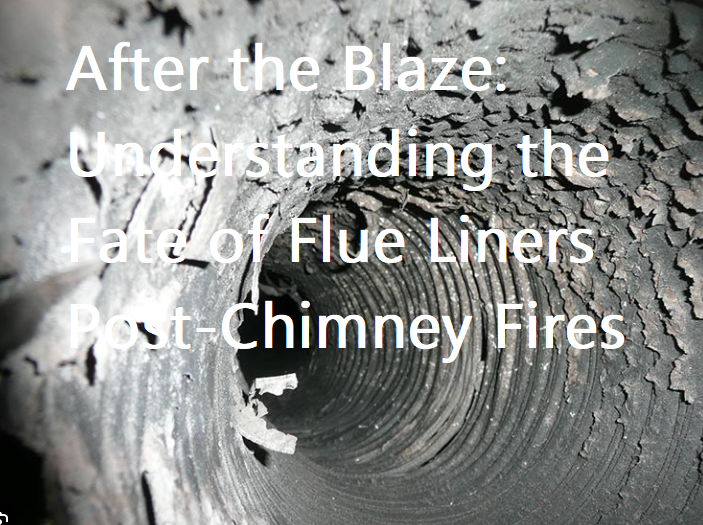After the Blaze: Understanding the Fate of Flue Liners Post-Chimney Fires: Alarming occurrences, chimney fires may wreak havoc on a home, putting lives in danger and resulting in substantial property damage. As vital as it is to prevent chimney fires, it is just as critical to comprehend their consequences. This blog post will discuss the damage that flue liners may experience from chimney fires, what happens to them afterward, and what homeowners may do to remedy the situation.
The Effect of Flue Liners on Chimney Fires:
Essential parts of chimneys, flue liners are made to shield the chimney’s structure and make it easier to safely remove combustion waste. Flue liners, however, can be severely stressed by the extreme heat and pressure of a chimney fire, which can result in a variety of damage. Following chimney fires, the following is what typically occurs to flue liners:
Cracking and Fracture: Flue liners may crack or fracture as a result of the high temperatures produced during a chimney fire. The integrity of the liner is jeopardized by these flaws, raising the possibility of gas leaks and chimney fires in the future.
Liner material degradation: Excessive heat can lead to the liner material breaking down, flaking, or distorting. The flue liner becomes less effective due to this degradation, and it might need to be replaced in order to maintain safety and functionality.
Warping and Displacement: During a chimney fire, thermal expansion and contraction can cause flue liners to warp or move from their original location. This displacement may clog the chimney flue, making it more difficult to ventilate properly and raising the possibility of carbon monoxide poisoning.
Creosote Buildup: Deposits of creosote that have collected inside the flue liner are frequently the cause of chimney fires. These deposits may be consumed entirely or in part after a chimney fire, leaving residue that might clog the chimney even more and raise the risk of more fires.
Resolving Flue Liner Damage: Following a chimney fire, homeowners must evaluate the state of their flue liners and take the necessary steps to repair any damage. The actions to take are as follows:
Inspection by a Professional: Hire a certified chimney sweep or technician to carry out a comprehensive examination of the flue liners and chimney. They are able to spot damage indicators like as fractures, cracks, and degradation and suggest any required replacements or repairs.
Repair or Replacement: Depending on the degree of damage, either full replacement or repair of the flue liners may be necessary. To guarantee the safety and effectiveness of the chimney system, this procedure should be completed by qualified experts with premium materials.
Cleaning and Maintenance: Cleaning the flue liners and chimney structure of any leftover creosote buildup and debris is crucial after a chimney fire. To keep your chimney in maximum condition and prevent future chimney fires, you must regularly clean and maintain it.
In summary:
In addition to being a major risk to one’s personal safety and property, chimney fires can compromise flue liners, necessitating maintenance. In order to protect their homes and loved ones, homeowners must be aware of the possible harm that chimney fires may cause to flue liners and act quickly to fix any problems. Homeowners can feel confident and at ease while enjoying the warmth and coziness of their fireplace by giving priority to chimney care and swiftly fixing any damage to the flue liner.


